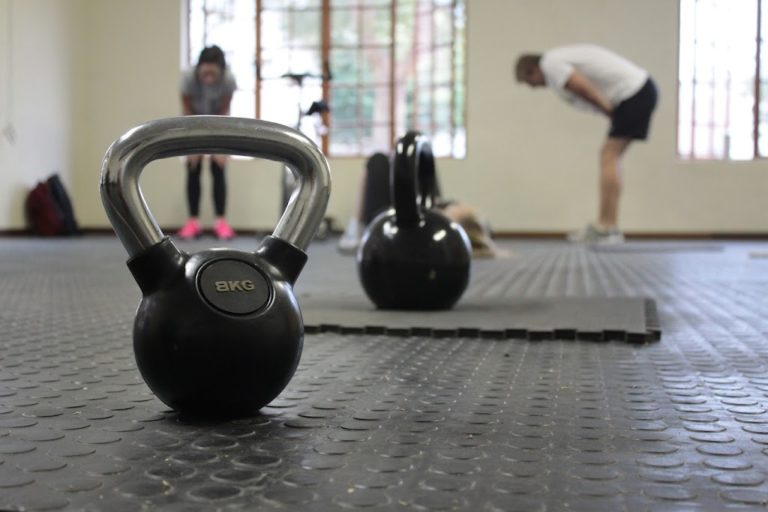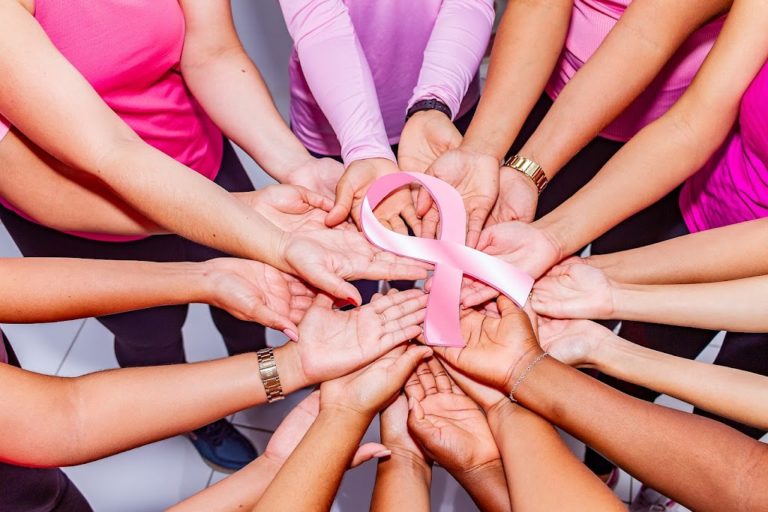In today’s society, the importance of healthy eating and body image
cannot be overstated. From media portrayals to societal expectations,
it’s easy to get caught up in a web of misconceptions and unrealistic
standards. This blog aims to provide you with the complete knowledge
you need to develop a healthy relationship with food and your body. By
understanding the interconnectedness of nutrition, self-esteem, and
overall well-being, you’ll be equipped to make informed choices that
nourish not only your physical health but also your mental and emotional
state.
1- Understanding Healthy Eating
Understanding healthy eating involves knowing how to make informed choices about the food we consume in order to support our overall well-being. It goes beyond simply focusing on calories or restrictive diets. Here are some key aspects of understanding healthy eating:
Balanced Nutrition: Healthy eating involves consuming a variety of nutrient-dense foods from different food groups. This includes fruits, vegetables, whole grains, lean proteins, and healthy fats. These foods provide essential vitamins, minerals, fiber, and antioxidants that support our body’s functions and help prevent chronic diseases.
Portion Control: Understanding portion sizes is crucial for maintaining a balanced diet. It’s important to be mindful of how much food we eat, as overeating can lead to weight gain and other health issues. Measuring or estimating portion sizes can help us eat appropriate amounts and avoid unnecessary calorie intake.
Mindful Eating: Healthy eating also involves being aware of our eating habits and paying attention to the experience of eating. Mindful eating encourages us to slow down, savor each bite, and listen to our body’s hunger and fullness cues. By being present during meals, we can develop a healthier relationship with food and avoid mindless overeating.
Moderation: Healthy eating emphasizes moderation rather than strict deprivation. It’s important to enjoy a wide range of foods, including occasional treats, while still maintaining a balanced diet. Allowing ourselves flexibility and the freedom to enjoy foods we love can promote a more sustainable and enjoyable approach to healthy eating.
Hydration: Adequate hydration is an essential part of healthy eating. Drinking enough water helps maintain proper bodily functions, supports digestion, and promotes overall well-being. It is recommended to drink at least 8 glasses of water per day, but individual needs may vary based on activity levels and climate.
Personalized Approach: Understanding healthy eating involves recognizing that everyone’s nutritional needs and preferences are unique. It’s important to listen to our bodies and make choices that align with our individual needs and goals. Consulting with a registered dietitian or healthcare professional can provide personalized guidance for optimal nutrition.
Long-Term Lifestyle: Healthy eating is not a short-term fix but a lifelong commitment to nourishing our bodies. It involves adopting sustainable habits and making choices that promote long-term health. Developing a positive and balanced relationship with food is key to maintaining healthy eating habits throughout life.
By understanding these aspects of healthy eating, we can make informed choices, prioritize our nutritional needs, and foster a positive relationship with food and our bodies. Remember, healthy eating is not about perfection but rather about finding a sustainable and enjoyable way to nourish ourselves.
2- Cultivating a Positive Body Image
Cultivating a positive body image involves developing a healthy and accepting attitude towards our own bodies, regardless of their shape, size, or appearance. It is about embracing and appreciating our bodies for what they can do rather than solely focusing on external appearance. Here are some key aspects of cultivating a positive body image:
Self-Acceptance: Accepting and embracing our bodies as they are is the foundation of a positive body image. This involves letting go of unrealistic societal standards and comparisons to others. Recognize that each body is unique and has its own beauty and worth.
Gratitude for Body Functionality: Shifting the focus from appearance to what our bodies can do helps foster a positive body image. Appreciating our bodies for their strength, resilience, and abilities encourages a more holistic view of self-worth. Engaging in activities that make us feel good and showcase our body’s capabilities can enhance body positivity.
Challenging Negative Self-Talk: Negative self-talk can contribute to a negative body image. It’s important to become aware of and challenge self-critical thoughts or beliefs about our bodies. Practice self-compassion and replace negative self-talk with positive affirmations and appreciation for the unique qualities and strengths of your body.
Surrounding Yourself with Positive Influences: Surrounding yourself with positive influences, whether it’s supportive friends, body-positive media, or communities that promote self-acceptance, can significantly impact body image. Seek out individuals and resources that promote body diversity, inclusivity, and self-love.
Rejecting Unrealistic Beauty Standards: Recognize that beauty comes in various forms, sizes, and shapes. Challenge societal beauty standards that perpetuate unrealistic ideals. Celebrate diversity and focus on embracing the beauty within yourself and others, regardless of societal norms.
Practicing Self-Care: Engaging in self-care activities that promote overall well-being can contribute to a positive body image. This includes activities such as nourishing your body with healthy food, engaging in regular exercise that feels good, getting enough rest, and prioritizing mental and emotional well-being. Taking care of yourself holistically can enhance body positivity.
Seeking Support: If struggles with body image persist, it can be helpful to seek support from professionals such as therapists or counselors who specialize in body image and self-esteem. They can provide guidance and tools to navigate challenges and promote a healthier body image.
Cultivating a positive body image is an ongoing process that requires self-reflection, self-compassion, and a shift in mindset. It involves embracing your body for all that it is and celebrating its uniqueness. By focusing on self-acceptance, gratitude, and self-care, you can develop a positive relationship with your body and foster a healthier body image.
3- The Connection Between Nutrition and Self-Esteem
The connection between nutrition and self-esteem is significant and complex. The foods we consume play a crucial role in our physical health, energy levels, and overall well-being, which in turn can influence our self-esteem. Here are some key aspects of the connection between nutrition and self-esteem:
Physical Well-being: Proper nutrition provides our bodies with the essential nutrients they need to function optimally. When we nourish ourselves with a balanced diet, including fruits, vegetables, whole grains, lean proteins, and healthy fats, we support our physical health. This can result in improved energy levels, better sleep, and overall vitality, which can positively impact our self-perception and self-esteem.
Brain Health: The brain relies on a steady supply of nutrients to function effectively. Nutrient deficiencies or imbalances can impact cognitive function, mood regulation, and overall mental health. Consuming a variety of nutrient-dense foods, including those rich in omega-3 fatty acids, B vitamins, and antioxidants, can support brain health and contribute to improved mood and mental well-being. Feeling mentally and emotionally balanced can positively influence self-esteem.
Body Image: Our relationship with food and our bodies can significantly impact self-esteem. A poor body image, often fueled by unrealistic societal standards, can lead to negative self-perception and lower self-esteem. Proper nutrition, combined with a balanced approach to eating, can support a healthy body weight, muscle tone, and overall body composition. Feeling physically strong and nourished can contribute to a more positive body image and improved self-esteem.
Emotional Well-being: The foods we consume can affect our emotional well-being. Nutrient-dense foods, such as those rich in omega-3 fatty acids, complex carbohydrates, and vitamins, can support the production of neurotransmitters like serotonin, which are crucial for mood regulation. Consuming a well-balanced diet can help stabilize moods and promote emotional well-being, positively impacting self-esteem.
Self-Care and Personal Empowerment: Prioritizing our nutritional needs and making conscious choices about the foods we consume can be an act of self-care. Taking control of our nutrition and making choices that nourish our bodies can empower us to take charge of our overall well-being. This sense of empowerment and self-care can contribute to improved self-esteem.
It is important to note that the relationship between nutrition and self-esteem is complex and can vary from person to person. While proper nutrition can support self-esteem, it is essential to approach it with a balanced and flexible mindset. Strict diets or obsessive food behaviors can have a negative impact on self-esteem and overall mental health. It is recommended to seek guidance from a registered dietitian or healthcare professional to develop a personalized and sustainable approach to nutrition that supports both physical health and self-esteem.
4- Overcoming Diet Culture
Overcoming diet culture involves challenging and rejecting the harmful beliefs and practices surrounding food, body image, and weight. Diet culture promotes the idea that thinness is equated with health, beauty, and worth, often leading to restrictive diets, obsession with weight loss, and negative body image. Here are some key aspects of overcoming diet culture:
Recognizing Diet Culture: The first step in overcoming diet culture is becoming aware of its presence and recognizing its harmful effects. Diet culture permeates society through media, advertising, and social norms, often promoting unrealistic body ideals and perpetuating the belief that our worth is tied to our appearance.
Shifting the Focus: Instead of fixating on weight and external appearance, shift the focus towards overall well-being, holistic health, and self-care. Embrace the concept of health at every size, which promotes the idea that all bodies, regardless of size, deserve respect and care.
Rejecting Restrictive Diets: Diets that severely restrict food groups or promote extreme calorie counting are not sustainable or conducive to long-term health. Embrace intuitive eating, which involves listening to your body’s hunger and fullness cues, and making food choices based on satisfaction and nourishment rather than rigid rules or restrictions.
Embracing Body Acceptance: Accept your body as it is, recognizing that it is unique and worthy of love and respect. Cultivate self-compassion and challenge negative self-talk or comparisons to unrealistic beauty standards. Focus on appreciating your body for what it can do and the qualities that make you who you are.
Promoting Health, Not Weight Loss: Shift the focus from weight loss to overall health and well-being. Engage in activities that make you feel good, nourish your body with balanced and nutritious foods, and prioritize physical and mental wellness. Health is multidimensional and not solely determined by a number on a scale.
Seeking Support: Overcoming diet culture can be challenging, so seek support from professionals who specialize in body image, intuitive eating, or health at every size. Surround yourself with a supportive community that embraces body diversity and promotes a positive relationship with food and self-acceptance.
Advocating for Change: Challenge societal norms and promote inclusivity and body positivity in your personal and social circles. Speak out against weight stigma and discrimination, and advocate for a shift towards a more compassionate and accepting society.
Overcoming diet culture is a journey that requires self-reflection, self-compassion, and a commitment to prioritizing your well-being over societal expectations. By embracing body acceptance, intuitive eating, and promoting a more inclusive and compassionate approach to health, you can break free from the constraints of diet culture and cultivate a healthier relationship with food, body image, and self-esteem.
5- Integrating Exercise and Body Positivity
Integrating exercise and body positivity involves shifting the focus from exercise solely as a means for weight management to embracing movement as a form of self-care, self-expression, and celebration of our bodies. It’s about fostering a positive relationship with exercise that promotes overall well-being and body acceptance. Here are some key aspects of integrating exercise and body positivity:
Shift the Focus: Move away from exercise solely as a means for weight loss or achieving a specific body shape. Instead, focus on the joy and benefits that exercise brings to your overall well-being. Embrace the idea that exercise is about taking care of your body, improving strength, flexibility, and overall fitness, and enhancing your mental and emotional health.
Find Activities You Enjoy: Engage in physical activities that you genuinely enjoy. Explore different forms of movement such as dancing, yoga, hiking, swimming, or team sports. Finding activities that bring you joy and make you feel good can foster a positive connection between exercise and body positivity.
Embrace Body Neutrality: Shift the focus from how your body looks during exercise to how it feels. Pay attention to the physical sensations, the energy, and the strength you experience while engaging in movement. Cultivate body neutrality by focusing on what your body can do rather than how it appears.
Set Realistic and Personal Goals: Instead of setting goals centered on weight or appearance, set goals that are focused on personal achievements and overall well-being. This could include running a certain distance, improving flexibility, or simply dedicating a specific amount of time each week to move your body. Celebrate your accomplishments and the progress you make, regardless of how they may manifest on your body.
Practice Mindful Movement: Engage in mindful movement by being fully present and aware of your body and its sensations during exercise. Listen to your body’s cues, honor its limits, and practice self-compassion. This can help you develop a deeper connection with your body and cultivate body positivity.
Surround Yourself with Positive Influences: Surround yourself with supportive and body-positive communities, whether it’s in-person or online. Engage with individuals who celebrate body diversity, promote inclusivity, and encourage a positive relationship with exercise and self-acceptance.
Challenge Exercise Stereotypes: Challenge societal beliefs and stereotypes around exercise. Reject the notion that certain body types or appearances are more deserving of engaging in physical activity. Embrace the idea that movement is for everyone, regardless of size, shape, or fitness level.
Integrating exercise and body positivity is about celebrating your body’s abilities, finding joy in movement, and embracing a holistic approach to health and well-being. By shifting the focus from appearance to overall fitness, setting realistic goals, practicing mindful movement, and surrounding yourself with positive influences, you can cultivate a positive relationship with exercise and foster body positivity.
Conclusion:
Healthy eating and body image are vital components of overall wellness.
By understanding the importance of nutrition, self-esteem, and body
acceptance, you can foster a positive relationship with food and your
body. Embrace holistic health, practice self-care, and prioritize your
well-being on this journey of self-discovery and growth.








